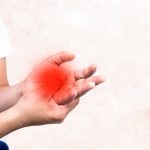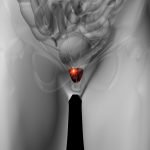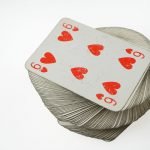Naturopathic Medical Education: What a Russian Soldier Taught Me About Its Value Proposition
Education
David J. Schleich, PhD
Naturopathic educators toil with the right language and content to describe the value proposition for the medicine for students. In an era of confusing messages flying hither and thither among naturopathic doctors, holistic medical doctors, functional medicine doctors, holistic nurse professionals, and – in recent years – integrative medicine doctors, a calming, guiding framework for action is in order.
I’d like to invite you back to the wild east of former Soviet Russia in 1983, where I found such counsel about value propositions in professional medical education even before I knew I would need to know about such things, and which insight has helped me navigate through today’s brave new world of ROI (return on investment) in post-secondary and higher education.
Siberian Mentors
It all began after a midsummer fortnight up at the top end of Lake Baikal in Siberia 35 years ago. There I was in a remote eastern USSR village surrounded by the magnificent hinterland of Siberian taiga (forest), smitten by rhododendrons and wildflowers profuse and cascading down to the shores of that unique, deep, deep lake. And in that village, I was charmed by the robust, resilient people who made their living there. There too were the peculiar and wonderful cries of cuckoo birds, distinct among the meadow pipits, dunnocks, and reed warblers sharing the terrain. In the late afternoon, the bubbly, chuckling calls of the cuckoos didn’t fool the locals, like Irene. She lived in one of the larch-built cabins – of mostly a chill jade color – that peppered the slopes descending to the lake.
Irene had rented me a room near the church. She warned me that the cuckoo is clever (in mimicking sparrowhawks), and proffered wisdom about those birds. They are, after all, she said, nest parasites. Know who’s doing what and why, she was telling me.
Her pretty little village had an impossible name (see below) that not only Irene, but also an old Russian soldier I met a few days later, challenged me to pronounce properly. Irene had been a fisher’s wife in the village for decades. The solider turned out to be a retired history professor at the Irkutsk State Technical University of Siberia. When I met him he was retired from both the military and the university, but now had a volunteer security job at the Irkutsk railhead. I learned that village name with difficulty.
As I passed through Irkutsk, en route slowly back home to North America via Leningrad and Helsinki, I was delayed by a very late train. I was standing at the Mikrorayon Batareynaya station with my backpack, waiting for the decrepit transcontinental Trans-Siberian train, which I could see wending its way westward along the Angara River. It finally arrived 3 hours late on its way to Krasnoyarsk and other points west, such as Krosnoyarsk, Omst, Perm, and eventually Moscow itself. On the platform on that very hot August afternoon, I happened to take up a spot on the crowded platform near a severe, tall, old soldier who suddenly began scolding a group of a dozen cadet pioneers to “priderzhivat’sya vyazaniya” (“stick to the knitting”). Angling for tips among the disembarking travelers, one of the young women in the group played her guitar and sang, surrounded by several of the train workers, performing for the Eastern European and Japanese “intourists” who had descended from the heat of the train during what soon developed into a prolonged delay. It was when one male tourist handed her some money that the soldier barked his admonition. The uniformed boys and girls quickly scurried away to and boarded a white and orange Liaz 5256 bus (that model was all over the Soviet Far East, sometimes in the most unlikely of places). I watched the whole thing uncomfortably. The old soldier sensed my minor chagrin about his officious behavior. He commented in elegant Russian, “They should not be bothering Intourist guests.” “But they enjoyed it,” I countered, in poor Russian.
A Russian Hit Song
The young girl had been singing a popular Latvian hit song, “Million Alyh Roz,” or “million red roses,” immortalized everywhere that year in the Soviet Union by Alla Pugacheva. I later bought an old Russian equivalent of a 45 record, which I have to this day. In any case, he stared down right into my face, probably surprised by my awkward Russian, and ready to coach me in pre-perestroika politics.
“Where do you come from, that you are waiting here for a train to go to Moscow?”
“I am from North America. I was in a little town up north.”
“Which town?”
I tried my best at the name. He laughed. He then said the name correctly. I imitated his pronunciation, repeated it twice, and later successfully did it again after we had a few hours together. I can say it right even today, but still have to break it down into syllables to make it through: Baykalo-Lenskiy Gosudarstvennyy Priorodnyy Zapovednik.
What he also said, in addition to straightening me out on the village name – and what is most relevant here – has stuck with me for a quarter-century. He said, more or less, pointing at my backpack with its big maple leaf, “My friend, you are a guest in our fatherland Soviet Union. We are in perilous times, and the future lies with our children. They cannot waste time with foolish songs about a million scarlet roses and a lovesick painter. They must stick to the knitting.”
“But,” I protested, presumptuously, when I should have known better, “should they not be permitted to be young?”
“They are not young. Russians cannot be young for more than a moment in this world,” he said slowly.
We were still standing on the platform, his assigned post. Many travelers were waiting to hear about the train’s likely departure time. Eventually, an announcement from the monstrous loudspeaker over the station next to a huge clock with 3 hands (the third hand always pointing to Moscow time), declared that the train would leave the following day at 2 PM.
We were both standing in the shade of a massive billboard blasting red and green letters to all and sundry about a sprawling monument behind it that honored Russians killed in what the sign proclaimed as “The Great Patriotic War.” Every quarter-hour in the time we had been standing there, a phalanx of young students in dark-blue uniforms oddly goosestepped up to the monument to salute its eternal flame.
In those hours we talked about many things: the compromises of the vanguard of the proletariat, my assertions about the impossibility of central planning, awful consumer reports on the Lada, and good ones on Soviet tractors.
The soldier’s name was Krispin. He had served many years in the Red Army in the Soviet Far East and had been among the 4 waves of very young Russian soldiers who occupied South Sakhalin and the Kuril Islands in 1945. Early into our conversation, I discovered that he spoke excellent French, which allowed me to abandon my terrible Russian and he, his labored English, and we were away to the races. The lessons came quickly.
“What we value in Soviet Russia is what lasts,” he said. “These young pioneers you like can have their songs, but they must stick to what matters,” he insisted. Later he repeated these same aphorisms in a pub where we retreated once we knew the train was not going anywhere. I drank tepid Kalinkin pivo and he swilled back long funnels of alcoholic fermented milk, which I did not favor as an afternoon repast. He chomped toothlessly on black bread and natural butter. I kept drinking pivo.
“What matters for them?” I asked him.
“What matters is only what we decide to teach them and only what they decide to learn,” he said. The implied transaction was clever. “And if what they learn are pretty songs only,” he went on, “that is not enough. They must know where it all came, even the sad painter soldier’s lament from the song, and why he and they are where they are this day.”
I have remembered that conversation from so long ago, not just because of the exotic, faraway city where it took place, but because Krispin’s words stuck and made sense in many contexts. He and I became pen pals (the best one could do back then). We kept up our conversations discretely about many topics over the next 20 years. His country collapsed in 1989 and he went silent for some months. Krispin last wrote me in 1996, the year I first became president of CCNM in Toronto. He understood what naturopathy was and sent me a parcel of information about Russian botanicals and the medical system in Siberia. More than once I have thought about his counsel. I have thought about what value propositions we have for new naturopathic doctors. How have they arrived at where they are?
I think Krispin would have said that our model for naturopathic medical education must assume what matters for health for all people. “So, the doctors of your country do not agree among themselves and they fight about who is the boss of the patient? Is a doctor not a doctor? Why do you have different doctors? What fuss and rattle is that?” he asked me in bold letters in the French language in one of his letters, reacting to a comment I made about naturopathic doctors not being the same as medical doctors in North America. Krispin passed in 1997 at age 92.
Value Proposition in Naturopathic Medical Education
I’m embellishing what Krispin said here, but a Krispin-approved model, had I been able to run it by him, likely would involve 3 simultaneous variables: customer (student or patient) buy-in to the value proposition, a value chain in the delivery of education and licensing, and a realistic revenue formula. He would never have used that language. We are asking a great deal of our ND programs, just as the pre-Gorbachev leaders in the USSR were asking a great deal of the newest generation of “pioneers” in the crazy end-game of the Cold War. Those young Siberians had never experienced a German invasion or a Stalinist pogrom, and were expected to understand and honor the traditions that preceded them.
Our value propositions might be these:
- A credential that is accredited and valued by a growing community
- A credential that is convenient and fairly priced
- A credential that emphasizes the experience of getting it, and not the course installments or final degree credential
- A credential that the experience of getting motivates lifelong learning and the commitment to solve crucial health problems on the planet
- A credential that leads to work and income every time because it is grounded in the integration of content with real-world experience
- A license that works where the licensee wants to work with what s/he has learned for a long, long time
- A credential recognized and honored by individuals and by third-party payers
- A growing profession on all fronts (numbers of states and provinces, cohorts in training, and clinical and residential venues in which to work)
In a world of integrative medicine, holistic medicine, and functional medicine – variegated forms with a similar core content – the values we attribute to our educational efforts must address what our deans and faculty are dealing with:
- the need for a strong, consensual definition of naturopathic medicine;
- a hotly competitive landscape where detractors have an edge;
- faculty workload and employment model issues;
- credentialing challenges;
- financial models that address student debt; and
- persistent cash flow vulnerabilities
Our students are not only experiencing the confusion of terminology and philosophy in the marketplace, but are also bringing their digital skills and habits into the equation at the same time as many of them continue to demonstrate great respect for the traditions and elders of the profession in a pre-digital age. The “revitalization” efforts at NUNM, SCNM, and Bastyr, and the recent growth of the NMI (Naturopathic Medicine Institute), indicate the persisting interest from what some would depict as a less complex era. Krispin would disagree. He would have said that all eras have their complexities. We know that smartphones, tablet computers, and lightweight laptops in our lecture halls are replete with conflicting messages and data about the location of naturopathic medicine in the healthcare terrain. All eras have their tools, but underlying everything are resilient values.
The ROI our students expect includes learning what Oblinger characterizes as “experiential, socially constructed, and interdisciplinary” (2012, p.14). Furthermore, she contends, “[In the post-course era], our classrooms may no longer be the place where the most significant learning takes place.” (2012, p.14) She emphasizes – in a way that reminds me of Irene and Krispin – participation and social connection, however achieved, whether via blogs, wikis, visualizations, digital information, simulations, or MOOCs. Those are not necessarily massive disrupters if they too can convey the traditional into the contemporary and both can propel forward the profession in the volatile terrain of health care and the militant politics of health, not to mention tight timing and cash flow realities.
Sticking to the Knitting
During some breakfasts and evening meals with Irene and her family, and during that delightful afternoon and evening of conversation and feasting with Krispin, along with our many letters over a number of years, I learned how concerned they both were about keeping the values and priorities of the past robust in the face of new challenges and priorities. Krispin, for example, worried that even though his country had emerged after the war as one of the world’s 2 great military powers, there was a solemnity and seriousness about the work at hand that was not embraced with the same conviction by the young people around him. I think of our contemporary naturopathic students who don’t understand their mission as particularly solemn and serious, tinged as it is with the practicalities of licensing and making a living.
Krispin once wrote to me about the infamous Zhdanovshchina Campaign (think McCarthyism, Soviet style) and how the answer to going forward was not by adopting an adversarial posture, but by focus and hard work that is grounded in shared values. He went on to talk about the days after the war when young people and old people alike squatted on their hams eating discarded vegetable rinds and scraping hopefully on the discarded bones of other people’s soups. “We were crafty back then,” he said. “We had eyes like the fox.” The naturopathic profession is not in starvation mode, but it is in scarcity mode in many jurisdictions.
As we continue to refine our naturopathic programming, adjusting to the complex interprofessional interplay before us means contending with a confused identity, along with a checkered, messy marketplace. We need elders like Krispin and Irene who can remind us about what to value most in our educational product and processes. Our graduates can emerge confident that way, and anchored to a long history of value-added contributions to civil society. Throughout it all, though, Krispin (and Irene too, probably) would insist that we have to stick to the knitting.
References:
Oblinger, D. G. (Ed). (2012). Game Changers: Education and Information Technologies. Louisville, CO: Educause.
Photo by nikita velikanin on Unsplash
 David J. Schleich, PhD, is president and CEO of the National University of Natural Medicine (NUNM), former president of Truestar Health, and former CEO and president of CCNM, where he served from 1996 to 2003. Previous posts have included appointments as vice president academic of Niagara College, and administrative and teaching positions at St. Lawrence College, Swinburne University (Australia) and the University of Alberta. His academic credentials have been earned from the University of Western Ontario (BA), the University of Alberta (MA), Queen’s University (BEd), and the University of Toronto (PhD).
David J. Schleich, PhD, is president and CEO of the National University of Natural Medicine (NUNM), former president of Truestar Health, and former CEO and president of CCNM, where he served from 1996 to 2003. Previous posts have included appointments as vice president academic of Niagara College, and administrative and teaching positions at St. Lawrence College, Swinburne University (Australia) and the University of Alberta. His academic credentials have been earned from the University of Western Ontario (BA), the University of Alberta (MA), Queen’s University (BEd), and the University of Toronto (PhD).








